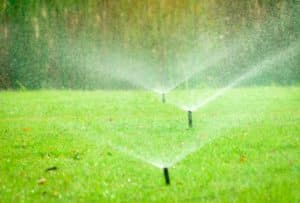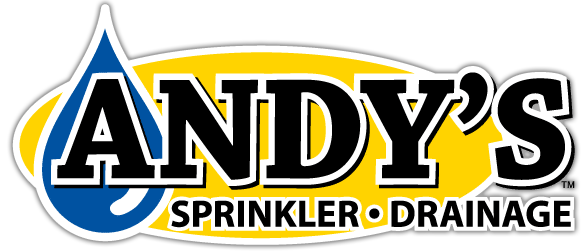How to Move a Sprinkler System Line

Landscaping enthusiasts are constantly improving and upgrading their lawn, shrubs, and flowers. In some cases, those improvements necessitate relocating sprinkler lines to provide adequate hydration for thirsty plants.
At Andy’s Sprinkler, Drainage, and Lighting, we understand that considerable planning and labor goes into reconfiguring a sprinkler system and relocating lines. Fortunately, our expert team can take care of the job for you! Curious how the process works? Below, we’ve outlined how to reroute an existing sprinkler line so you know how our team conducts the procedure.
1. Plan the New Sprinkler Line Layout
Before we can move the line, we must plan out the new sprinkler line layout according to your landscaping needs. First, we analyze your landscaping to determine where to place the new line so your foliage receives adequate hydration.
2. Locate the Origin of the Line
To move a sprinkler system line, we must first locate its origin. Within your sprinkler system, there are a set of valves that controls each sprinkler line. Those valves are typically housed in a plastic box below ground, typically identified by a round green plastic top. We trace the existing line to its origin at the valve and cut it at the point of attachment.
3. Dig a Trench to Excavate the Line
We begin digging after cutting the valve. We start by digging a trench along the top of the pipe. We do a shallow soil excavation just shy of the pipe to make sure we don't damage the line. Then we gently scrape away the rest of the soil until the line is visible. We also take extra care when digging around each sprinkler head and riser to make sure that each part stays completely intact during the excavation.
We watch for pipes that go off the line we're digging as we dig. We will also need to dig up any branching supply lines where they connect to the line we are working on because we will be taking that line out.
4. Remove the Pipe and Sprinklers
If we're going to use the whole line and the sprinkler heads again, we carefully take each part out of the trench and put them aside. If we only need to use some parts of the pipe, we'll cut it to the right size based on what we decided during the first planning stage. We fill the trench back up with dirt after taking out the line and all the sprinkler parts.
5. Lay Out Pipe and Mark the New Line
Next, we put down the pipe and put flags along the new line in the spot we planned for it during the planning phase. Before we can start digging the trench for the new line's location, we need to call your local utility company to find out if there are any service lines in the way.
If there are any marked lines that get in the way, we'll have to change the layout of the sprinkler lines to make room for the service lines. Last but not least, we'll start digging the trench for the new sprinkler line as soon as the utility company gives us the green light.
6. Dig the New Trench and Insert Pipes
We move the pipe and sprinkler heads out of the way before we start digging. We just follow the flags that are already on the line to dig the new trench.
Next, we check the depth of the new trench to make sure your sprinkler heads are at the right height and dig the trench below the frost line for your yard. When we're done digging the new trench for the sprinkler line, we lay the pipe in it and hook it up to the water source.
7. Remove Sprinkler Heads and Flush Pipes
Soil often gets into sprinkler pipes when they are dug up, so we need to make sure that the pipe is clean before we put the heads on and cover the pipe with soil again. To do this, we do a simple water flush, which means taking off the sprinkler heads and turning on the water. We check for leaks by turning on the water and replacing the sprinkler heads after flushing the pipes. At this point, we'll fix any leaks we see.
8. Replace Soil and Test the Pipes
Lastly, we cover the pipes with dirt, making sure to keep the sprinkler heads straight as we secure them in place with dirt. Next, we turn on the water to check the direction of each sprinkler head and make any changes that are needed. That's all! Your new sprinkler line will be ready to use as soon as we finish orienting the heads. If you're changing your landscaping and need to move your sprinkler system around, call Andy's Sprinkler, Drainage, and Lighting. We specialize in sprinkler system reroutes, checkups, repairs, and a wide variety of drainage and outdoor lighting solutions. When you need experienced professionals you can trust to take care of all your sprinkler system needs, we’re the team to call! To learn more about our services, request a quote, or schedule a service appointment, feel free to contact our team today.
